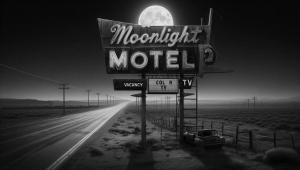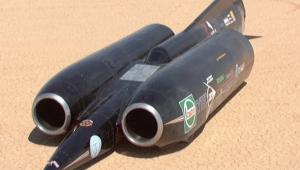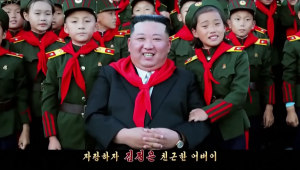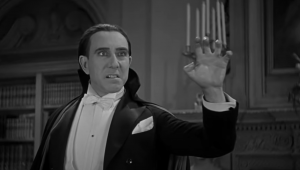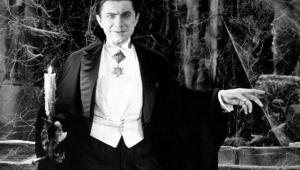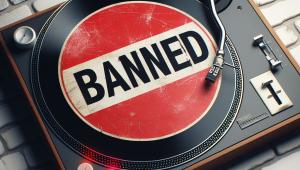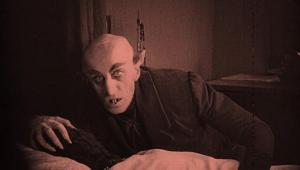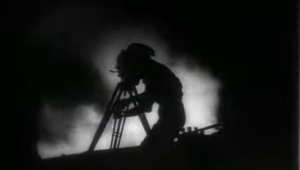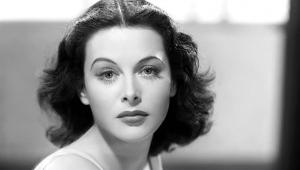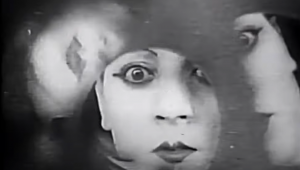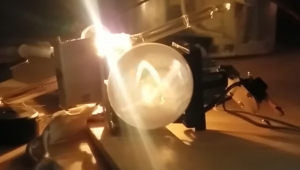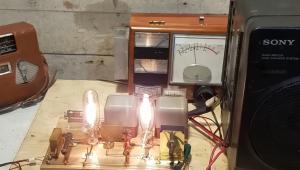Sure the vocals are real and the impressive backing is live but, what is it? It's like Memorex taken to an extreme level. Looks like Orbison, sounds like Orbison, and is a recording. I'll give engineers kudos for pulling off the technical coup, but I felt as if the image was an actor so why not just use an actor lip-syncing? Because they can perhaps. I wonder how the audiences who see this interpret it? I don't think I'd be that keen on seeing a concert that never happened, but I may be wrong.
Rock 'n' Roll Resurrection

I always thought Roy Orbison was pretty cool. Not really a country singer. Not a hard rocker. Certainly not a flashy singer. Just a cool guy, an intense guy, with dark sunglasses. I was sad when he died in 1988, at the young age of 52. But now, he's making a comeback.
Roy Orbison is embarking on a 28-city North American tour that began in Los Angeles, a follow-up to a European tour earlier this year. As you might guess, this is no Weekend at Bernie's situation. Instead, Mr. Orbison appears as a holographic image. A company called BASE Hologram (they own the copyright to the image I am using here), worked with the Orbison estate to create the musician's image and the concert experience. They used a model as a body double and motion capture technology to track his moves, then mapped Orbison's image onto that framework complete with lip syncing to the vocal track. The image is projected without a screen, and does not use previous concert footage. A live orchestra provides the accompaniment.
The vocal track is all-original; the 16 songs in the concert are taken from Orbison recordings. I wonder if they are using the original "Pretty Woman" recording, as engineered in 1964 by my friend and mentor, the late Bill Porter.
Of course, this kind of recreation has been used before, with artists such as Billie Holiday and Michael Jackson. The Roy Orbison concert, however, is more ambitious and is quite convincing. Take a look at a brief snippet. It looks pretty good. BASE Hologram is also presenting a concert tour with Maria Callas, a diva who departed us in 1977, and other performers are being reborn back in their CGI lab.
Of course, presentations such as this invite discussion. From a purely technological point, I would be very interested in seeing a holographic concert. Part technological tour de force, part novelty, I wonder how I would respond to the experience. Blown away? Creeped out? Or just another audience member who enjoyed a "live" music performance?
The technology also creates legal complexity. Performers need to specify how their afterlife should be managed. Their estates will certainly benefit. Live concerts make money, and perhaps more important, they stimulate renewed sales of legacy music that may otherwise be forgotten.
Technologically, such concerts are possible, and I am sure the technology will only get better. Orbison appears as a two-dimensional holographic image. In the future, I am sure that even more realistic three-dimensional holograms will be presented. Today, Mr. Orbison cannot interact with the audience such as when the crowd clamors for an encore. In the future, I am sure interaction will be possible. And if songwriters keep writing new songs, long-gone musicians could even test an audience's patience with "a song from my new album."
Yes, all that is possible, but is it right? Would Mr. Orbison agree with his heir's decision to put him back on stage? And aside from the novelty, what is the difference between a projected image with canned vocal tracks, and simply watching a concert video? And in the end, if the musician isn't even in the venue, why should we care? Why not just listen to the recordings at home?
Good questions. Meanwhile, Roy, best of luck to you on your concert tour. Knock 'em dead.
- Log in or register to post comments

